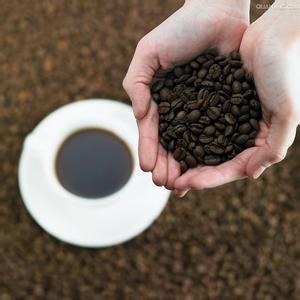Starbucks Coffee Bean Grade-Starbucks Coffee Bean Grade
Classification of raw coffee beans-Starbucks coffee bean grinding grade
Causes:
1) Agriculture: blackening is the result of excessive fermentation of pigments by microorganisms.
Precautionary measures:
1) Agriculture. Black beans can be prevented during picking, picking ripe fruits only from trees, and avoiding excessive fermentation during farm processing.
2) deal with. When the endocarp of the coffee bean is removed, the black bean is very obvious. They are usually small and low-density, and some can be removed through sieves and density classifiers. The most effective way to select black beans is through hand selection or color classifier.
1. Graded by the size of coffee beans
Representative countries: Kenya, Papua New Guinea, Zimbabwe, Tanzania, Uganda, etc.
Coffee beans from the same origin must be large and full, which means that the coffee fruit is picked only when it grows to its best condition, and the beans in the coffee fruit can reflect the best flavor.
This grading is achieved through a sieve, where the coffee beans are placed on the sieve. After shaking back and forth, the beans smaller than the mesh are screened out, and the beans are screened again with a smaller sieve, so that after layers of selection, the coffee beans can be graded. The mesh size is calculated in 1 stroke 64 inches, the number is 19 if the diameter is 19ax 64 inches, and the number is 16 if the mesh is 16 picks 64 inches. Pingdou 20-19 is extra-large, 18 is large, 17 is quasi-large, 16 is ordinary, 15 is medium, 14 is small, and 13-12 is super-small.
According to size, it is finally divided into AA, A, B, C and PH levels, with AA as the highest level, and coffee beans at this level are eligible to be selected for selection of coffee, and coffee below C is usually used as feed or fertilizer.

Important Notice :
前街咖啡 FrontStreet Coffee has moved to new addredd:
FrontStreet Coffee Address: 315,Donghua East Road,GuangZhou
Tel:020 38364473
- Prev

How long can the half-cooked coffee beans last after grinding? how to drink the coffee beans after they are ground into powder
How long will the half-cooked coffee beans last after grinding? most of the coffee beans are one-way exhaust valve bags lined with aluminum foil. Aluminum foil can block light and air. The function of the one-way exhaust valve is to discharge too much carbon dioxide so that the bag will not burst without opening. Use about 96 degrees pure water (it must be pure water, otherwise it will affect the taste of coffee), even a small amount of
- Next

Classification of raw coffee beans-Starbucks coffee bean grinding grade
Coffee raw bean grade distinction-Starbucks coffee bean grinding grade causes: 1) Agriculture: blackening is the result of excessive microbial fermentation to produce pigment. Preventive measures: 1) agriculture. Black beans can be prevented during picking, picking ripe fruits only from trees, and avoiding excessive fermentation during farm processing. 2) deal with. When the endocarp of the coffee bean is removed, the black bean is very obvious.
Related
- Guji coffee producing area of Guji, Ethiopia: Humbela, Shakiso, Wulaga
- What is the most expensive variety of Qiloso in BOP multi-variety group?
- How to store the coffee beans bought home?
- Why are Yemeni coffee beans so rare now?
- Ethiopian Sidamo all Red Fruit Sun Sun Santa Vini Coffee beans
- SOE is mostly sour? What does it mean? Is it a single bean? what's the difference between it and Italian blending?
- Is Italian coffee beans suitable for making hand-brewed coffee?
- How to choose coffee beans when making cold coffee? What kind of coffee beans are suitable for making cold coffee?
- Just entered the pit to make coffee, what kind of coffee beans should be chosen?
- Can only Japan buy real Blue Mountain Coffee? What are authentic Jamaican Blue Mountain coffee beans?

